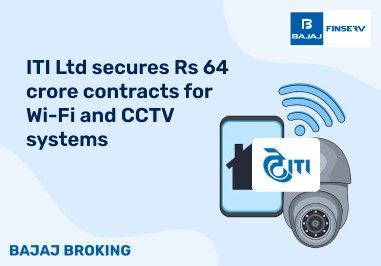BAJAJ BROKING
Laxmi Dental IPO is Open!
Open a Free Demat Account
Trade Now, Pay Later with up to 4x
Track Market Movers Instantly
How To Open Joint Demat Account
Introduction
Investing in the Indian stock market necessitates the possession of both a demat and a trading account. While the trading account facilitates the buying and selling of securities, the demat account serves as a secure repository for these assets. In India, individuals have the option to open demat account either on their own or in collaboration with a partner. While you wonder, “can I open a joint demat account,” in this comprehensive guide, we will delve into the intricacies of a joint demat account, shedding light on its features, the process of opening one, required documents, benefits, and important considerations.
Also Read: Eligibility Criteria to Open Demat Account
Understanding a Joint Demat Account
A joint demat account operates similarly to an individual demat account with a key distinction – it accommodates more than one account holder. The primary function of a joint demat account is to hold securities jointly owned by the account holders. Here are the core features of a joint demat account:
1. Account Holders:
A joint demat account can have a maximum of three account holders. Among them, one is designated as the primary holder, while the other two assume secondary holder roles.
2. Transaction Validation:
Any of the account holders can initiate a transaction within the account. However, the critical aspect is that all account holders must collectively approve and validate any transaction.
3. Modification:
Once a joint demat account is opened, the names of the account holders cannot be altered, added, or removed.
4. Maintenance Charges:
Unlike individual demat accounts, joint demat account holders are not required to pay separate annual maintenance charges.
5. Death Benefit:
In the unfortunate event of the demise of one of the account holders, the ownership of the joint demat account is transferred to the remaining account holders. If all account holders pass away, the nominated individual will inherit the account’s benefits.
How to Open a Joint Demat Account in India
To initiate a joint demat account in India, you can choose from various depository participants (DPs), which act as intermediaries between investors and the central depository. The following steps outline the process:
1. Choose a Depository Participant (DP):
Research and select a DP based on the services they offer. You can approach a bank, a stockbroking company, or another authorised DP. Account opening can be done either offline by visiting their branch office or online through their website.
2. Submit KYC Documents:
To establish the account, all account holders must furnish KYC (Know Your Customer) documents, including an application form, identity proof, and address proof. The DP will meticulously review these documents.
3. Verification:
After submitting the required documents, all account holders must sign the necessary paperwork in the presence of DP staff for verification. This step ensures that the details provided are accurate.
4. Account Approval:
Following successful verification, the DP will approve the joint demat account. Account credentials will be shared with all account holders, enabling them to commence trading immediately.
Required Documents
To open a joint demat account, the following documents are typically required:
- Application form for a Demat account
- Application form for KYC (Know Your Customer)
- Passport-sized photographs for all account holders
- Self-attested copies of PAN Cards
- Self-attested documents serving as proof of address (e.g., Aadhar card, utility bills, passport, driver’s licence, voter ID)
- Proof of bank account for the primary holder
- A cancelled cheque
- Documents as proof of income (e.g., bank statements, salary slips, and income tax return acknowledgments)
Benefits of a Joint Demat Account
Opening a joint demat account offers several advantages:
1. Pooling Resources:
Multiple investors can combine their resources to collectively invest in financial assets.
2. Lower Maintenance Fees:
Joint demat account holders enjoy reduced account maintenance fees compared to individual demat accounts.
3. Flexibility:
Account holders can access and transact from anywhere globally and at any time. Additionally, they can monitor the account’s status and benefits remotely.
4. Estate Planning:
A joint demat account facilitates estate planning, ensuring a smooth transfer of assets to the surviving account holder(s).
5. Investment Opportunities:
All account holders can jointly seize investment opportunities and make informed decisions together.
Also Read: TPIN in a Demat Account
Considerations Before Opening a Joint Demat Account
When opening a joint demat account, keep these important considerations in mind:
1. Approval of Account Holders:
To open a joint demat account the active participation and approval of all the account holders are imperative for transaction validity.
2. No Modification of Account Holder Details:
Account holder details, such as names and dates of birth, cannot be modified post-account opening. Any corrections require the opening of a new demat account.
3. Taxation:
The primary account holder assumes sole liability for capital gains tax on profits earned within the account.
4. Single Trading Account:
A joint demat account is linked to a single trading account, primarily owned by the primary account holder. Communication regarding the demat account typically occurs with the primary holder.
5. No Conversion from Individual to Joint:
An individual demat account cannot be converted into a joint account. Joint accounts must be established during the initial application process, and additional holders cannot be added to an existing account.
New Joint Demat Account Rules
If existing joint account holders wish to open a new joint demat account, all account holder names in the new account must match exactly and be in the same sequence as in the original account. Deviations from this rule may restrict trading and securities transfers.
Wrapping Up
In conclusion, can a demat account be opened jointly? Yes, a joint demat account in India offers a collaborative and cost-effective approach to investing in the stock market. By understanding its features, the account opening process, required documentation, benefits, and key considerations, investors can make informed decisions when considering how to open demat accounts as this financial instrument.
Share this article:
- Related Articles
- Top Articles

Gold Rate Today | 14 January 2025 | Gold Price in India
14 Jan, 2025 | 40 Min. read

HCL Tech expands partnership with Microsoft to transform contact centres
14 Jan, 2025 | 2 Min. read

BEL secures new orders worth Rs 561 crore, boosting FY25 order book
14 Jan, 2025 | 2 Min. read

ITI Ltd secures Rs 64 crore contracts for Wi-Fi and CCTV systems
14 Jan, 2025 | 2 Min. read

JSW Energy secures LoI for 3.6 GW KSK Mahanadi power plant
14 Jan, 2025 | 2 Min. read

Biocon Biologics’ Johor Bahru Facility Receives FDA VAI Classification
13 Jan, 2025 | 2 Min. read

Interarch Secures ₹221 Crore Projects in Semiconductors & Energy Storage
13 Jan, 2025 | 2 Min. read

DMart Appoints Anshul Asawa as CEO Designate, Succeeding Ignatius Noronha
13 Jan, 2025 | 2 Min. read

JSW Energy Completes ₹630 Crore Acquisition of 125 MW RE Assets
13 Jan, 2025 | 2 Min. read

Laxmi Dental IPO- Key Objective & Deep Analysis
13 Jan, 2025 | 4 Min. read

How to Apply for Sat Kartar Shopping IPO & Check Allotment Status?
13 Jan, 2025 | 1 Min. read

How to Apply for Kabra Jewels IPO & Check Allotment Status?
13 Jan, 2025 | 1 Min. read

RBI Launches ULI: Transforming Loan Access
August 27, 2024 | 4 Min. read

Textile Sector in India
September 20, 2024 | 5 Min. read

List of IPOs with DRHPs Filed
November 30, 2023 | 3 Min. read

Aditya Birla Group
September 28, 2023 | 10 Min. read

Bajaj Housing Finance Ltd IPO: Things Smart Investors Need to Know
September 05, 2024 | 4 Min. read

Budget Stock Ideas 2024-2025 | Stocks to Buy Today
July 24, 2024 | 4 Min. read

IPO Eligibility Criteria : Full Details
March 15, 2024 | 6 Min. read

What Is the Lock-In Period in IPOs?
October 18, 2023 | 6 Min. read

Godfrey Phillips Announces 2:1 Bonus Shares
September 16, 2024 | 7 Min. read

Jindal Group- A Comprehensive Analysis
September 27, 2024 | 7 Min. read
Read More Blogs
Our Secure Trading Platforms
Level up your stock market experience: Download the Bajaj Broking App for effortless investing and trading


